
The mineralogical phenomenon that best replicates this celestial splendor is labradorescence-the multicolored, subsurface, iridescent sheen that characterizes fine specimens of labradorite.
Labradorite's classic source-its geologic type locality, namesake, and the birthplace of its legends-is the remote coast of Labrador, the northern part of the Canadian province of Newfoundland and Labrador. Labrador is named for the Portuguese mariner João Fernandes Lavrador who, in 1498, braved the region's subarctic climate to explore its rugged, deeply indented coast.
"FIRESTONE"
In 1771, Moravian missionary Jens Haven founded the coastal settlement of Nain in northern Labrador. Intrigued by the brightly colored stones displayed by the indigenous Inuit, Haven sent specimens to Germany where they became known as "Labrador Stein," and to England where they were called "Labrador stone" and "firestone."
As the first new mineral reported from what would become Canada, Haven's specimens, with their eye-catching colors, attracted great scientific attention in Europe. In 1780, German geologist Abraham Gottlieb Werner, unable to determine the composition of Labrador Stein, erroneously described it as a distinct mineral species.
The first clue toward understanding the chemistry of "firestone" came in 1820, when researchers described the plagioclase feldspar minerals albite (sodium aluminum silicate) and anorthite (calcium aluminum silicate). Soon afterward, French mineralogist François-Sulpice Bedant determined that the Labrador specimens were a type of feldspar with characteristics of both anorthite and albite and named them "labradorite."
PROPERTIES AND OCCURRENCE
This story is from the {{IssueName}} edition of {{MagazineName}}.
Start your 7-day Magzter GOLD free trial to access thousands of curated premium stories, and 9,000+ magazines and newspapers.
Already a subscriber ? Sign In
This story is from the {{IssueName}} edition of {{MagazineName}}.
Start your 7-day Magzter GOLD free trial to access thousands of curated premium stories, and 9,000+ magazines and newspapers.
Already a subscriber? Sign In
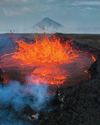
THE BRIGHT SIDE OF VOLCANIC ROCK
As a mineral resource, volcanic rock is decidedly short on glamour.
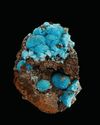
The Other Copper Minerals
12 Lesser-known Collectible Species

MINERAL COLLECTING -AND ROCK & GEM
Evolving Together FOR 54 YEARS
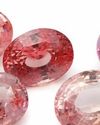
Gemstone Trends
A Look Back at 2024 & What to Expect in 2025
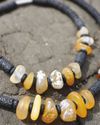
How to Make a GEM BEAD NECKLACE
No Lapidary Experience Needed!
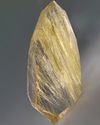
Framing Nature's Art
Faceting Rutilated Quartz for Beginners
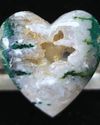
BEDAZZLED BLUE SEAM AGATE
More than several centuries ago, mining was the profession most often seen as befitting of men.
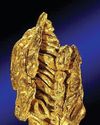
ROCK & GEM FIELD GUIDE:
Spinel is a captivating gemstone with a rich history of being mistaken for gems like ruby and sapphire.
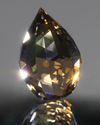
SNAKE SCALE DROP 1.5:1
This Faceting Focus is revisiting the briolette gemstone design because of its popularity with independent and hobby gemstone faceters.
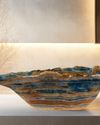
STONE CHIC
How Earth-Inspired Decor Brings Comfort to our Home